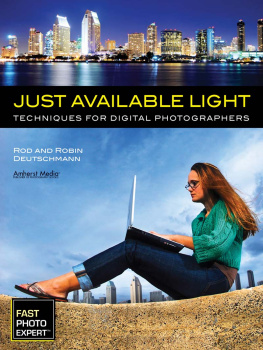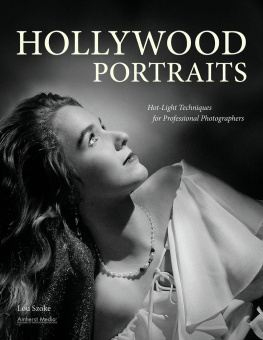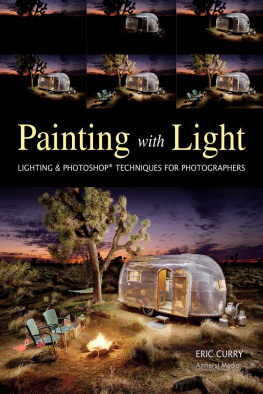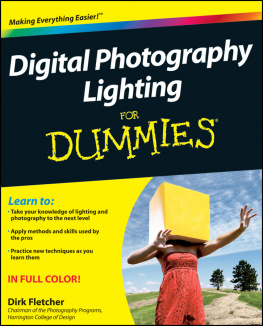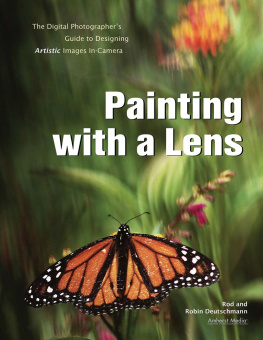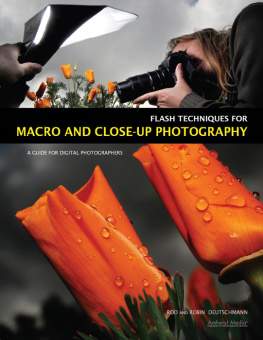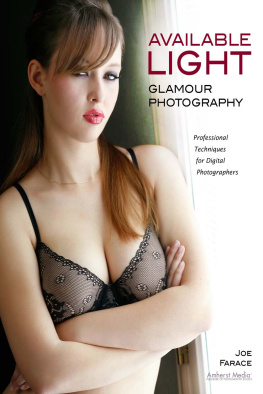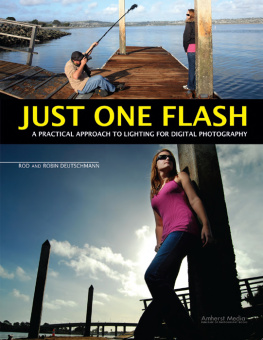ABOUT THE AUTHORS

Rod and Robin Deutschmann have been teaching people to be artists with their cameras for years. Their gritty and honest approach has garnered them a large and faithful following of Southern California photographers. They tout the use of manual control over all else and offer a unique and exciting view of photography that centers more on the shooter and his vision than just his gear.
Copyright 2013 by Rod and Robin Deutschmann.
All rights reserved.
All photographs by the authors.
Published by:
Amherst Media, Inc.
P.O. Box 586
Buffalo, N.Y. 14226
Fax: 716-874-4508
www.AmherstMedia.com
Publisher: Craig Alesse
Senior Editor/Production Manager: Michelle Perkins
Assistant Editor: Barbara A. Lynch-Johnt
Editorial assistance from: Sally Jarzab, John S. Loder, and Carey A. Miller
Business Manager: Adam Richards
Marketing, Sales, and Promotion Manager: Kate Neaverth
Warehouse and Fulfillment Manager: Roger Singo
ISBN-13: 978-1-60895-556-5
Library of Congress Control Number: 2012936514
Printed in The United States of America.
10 9 8 7 6 5 4 3 2 1
No part of this publication may be reproduced, stored, or transmitted in any form or by any means, electronic, mechanical, photocopied, recorded or otherwise, without prior written consent from the publisher.
Notice of Disclaimer: The information contained in this book is based on the authors experience and opinions. The authors and publisher will not be held liable for the use or misuse of the information in this book.
Check out Amherst MediaS blogs at: http://portrait-photographer.blogspot.com/
http://weddingphotographer-amherstmedia.blogspot.com/
T ABLE OF C ONTENTS



I NTRODUCTION
T he digital camera offers amazing advantages to the artist-in-training, the photographer who uses all available light. The biggest is the opportunity to see his mistakes when he makes them. This instant experience is something new to photography. Its changing everything we know about capturing light, about taking pictures and creating real art with a camera. With this book, we offer a glimpse of whats possible in-camera, a new and vivacious way of approaching photography that centers on vision and exploration rather than after-the-fact corrections. We want to give you hope, to offer inspiration, and show you a clear and uncluttered path to follow.


The top image illustrates how the artist visualized the scene, while the bottom photo shows how it actually appeared. Since a true artist sees beyond reality and knows what his gear is capable of, he can easily create something spectacular simply by adjusting a few incamera settings and turning his polarizer. Believe it or not, he can do all of this without the need to edit his images after the fact. Imagine, taking a photo incamera that doesnt need to be correctedwhat is the world coming to?
A MAZING P HOTOGRAPHERS M AKE I T L OOK E ASY
They raise their camera and capture the spectacular. Its as if theyre not even thinking about it, yet they are. So well-trained, they make the creation process look like point-and-shoot magic, but its not. Meaningful photography requires thoughtfulness, attention to detail, and sometimes an eye for the absurd. Its about the beauty of nature and the strength of independent resolve, about individual expression and lightning-fast decisions. It is as much about the artist and his love for life as it is about his equipment and experience level.
A C LEAR V ISION
Experienced photographers will tell you that great photographs dont necessarily come from great cameras; they come from a clear vision. The brand name of your gear doesnt matter when taking a photo (just as long as it works). If you use what you have creatively and with purpose, then any tool (despite its cost or age) will get you to your goal. Thats not just insight, its the truth. The most important part, of course, is knowing what you want to accomplish when you begin. If youve got a vision, if you know what you want to build, then the tools will make sense. Think, build, create, and smile. Know what it is you want to say and make your camera say it. Thats all an artist has to do.
ITS ABOUT VISION
The art of photography is all about lightand there is none greater than the one that shines from a passionate and artistic heart.

One simple, unmodified flash aimed high and to the left of our subject created the perfect, most natural-looking light. Yes, a flash is available light. Thats why we carry one with us.
W HAT IS A VAILABLE L IGHT?
I TS Q UITE S IMPLE, R EALLY
Available light is what you hold in your heart. It springs as much from your imagination and vision as it does the sun or a flash. If you can imagine it, create it, or manipulate it, its available. Available light is not natural light, its anything an artist can use to set his vision free. It can be a flash, direct sunlight, reflected light, window light, illumination from a flashlight, a strobe, or even light from your cars headlight. If an artist can see it, seize upon its power, and visualize all his possibilities, its availableand its probably going to be used.
WHO KNEW?
Available light offers an unbelievable number of artistic options. You can use any light you encounter to create amazing images like this one. All you need is a mastery of your cameras controls and a desire to create something different from the rest of the pack.

Should natural light fail, you could always add light with a flash (as there is no light more available than the one you carry with you).

If a certain section of your photo seems a bit too bright you could go old school and strip the excess light with a properly placed graduated neutral density filter (see ).

If you truly want to gain control of your environment, then you could use two light-stand-mounted flashes for the ultimate in available light, outdoor daylight portraiture.

